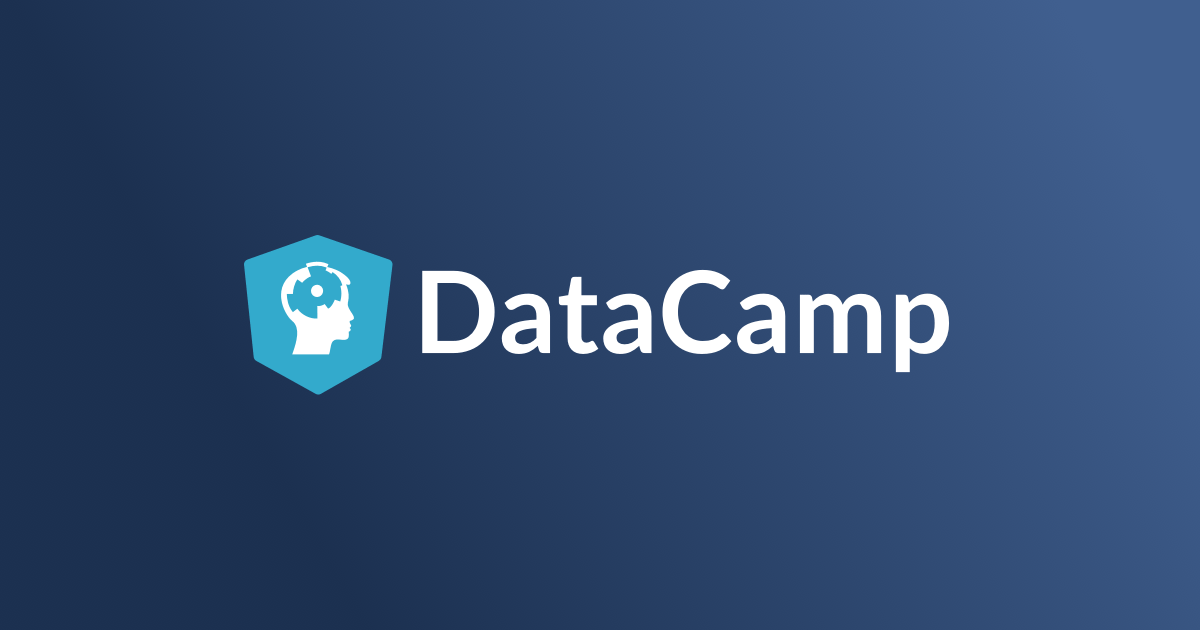Why machine learning with Datacamp
When beginning machine learning its easy to be overwhelmed by the vast array of resources available online and in physical book form that it can lead to a paralysis of action. My experience was that of considerable chopping and changing of books and plans as I tried to come to grips with the sheer quantity and quality of material. As usual in the early period of new paradigms in any field, “experts” try to cash in on the number of people seeking to learn the new techniques and this frequently leads to poor quality books being produced as people with a little or vast knowledge of the field try to cash in. Its the reason why in this rapidly developing and expanding field a few people are taken up as the de facto gurus of the day. Andrew Ng comes to mind. They produce one resource which everyone universally agrees is a high quality resource.
I found there was a lot of information but no one book or resource that you could say was the go to resource. Therefore through trial and error I came upon my system of learning. My general modus operandi was to use only free resources previously. I’ll detail my list of free resources in another article soon.
I did luck out and happened upon the Datacamp website when searching around for courses on machine learning. I initially opted for the free membership which gives access to a limited set of courses and only the first chapter of each course. I wanted to see firstly what it was all about and the teaching methodology. Presentation of the material was also very important. I didn’t want anything which wasted even more time. The reason why I liked Datacamp and decided to pay for an annual subscription were as follows :-
I’ll list the pros and the cons.
I liked the teaching style. A mixture of short video lectures followed by hands on albeit guided coding. The guided coding or “hand holding” as its termed sometimes is actually a blessing. The programming environment is setup for you and so you don’t have to waste time on the configuration of environments (for a novice programmer this can be a huge and time consuming hurdle). If using a programming software package such as for example netbeans then the learning curve is very steep for the beginner. This can be very demoralising for a machine learning novice as “mini victories” each day are a must as you tackle the machine learning concepts. To get bogged down with the nitty gritty of programming environments and nuances of various software would be in my opinion detrimental.
Topics were presented in around 4 hours mostly. Which for the people who are part time students is manageable if a few hours are devoted to learning in the evenings a few days a week.
Each course lists the prerequisite courses/knowledge one requires in order to tackle that particular course. This gives a logical structure to the learning.
The system keeps a track of the practical exercises given and tests are frequent and cover each new topic introduced.
At the time of writing the number of available courses are 325. This is broken down in to various classes of machine learning techniques and also into classes according to the programming language used. Predominantly the language used is Python along with its various machine learning libraries e.g. scikit-learn, numpy, matplotlib etc but also other languages are covered such as R. Pre-requisite skills/ knowledge for each course are given. New courses and projects were being added all the time. The upcoming new courses could be seen in the account dashboard.
Longer and more challenging practical projects are also covered in detail to level up ones skills. For example one of the current projects available to study and work through is “Predict Taxi Fares with Random Forests : Use regression trees and random forests to find places where New York taxi drivers earn the most”. The common dilemma amongst beginners to machine learning are which more complex projects to tackle in order to get to grips with the real world application of machine learning. This helps with that process and does equip you well with a detailed knowledge of the practical steps one must use in the real world to devise, design and write new machine learning software. I found it really helped my round out my skills from the basic knowledge of what a machine learning project encompasses.
In summary I found the Datacamp site to be a very very useful learning resource. All for the cost of a sandwich and coffee per month. Provided you are disciplined and make use of the courses and projects by tackling course after course its worth that price many times over. I enjoyed waking up early and doing some exercises daily and then again whenever I could. There is an app also so its possible to do the courses on your phone or tablet whilst out and about. Although I can’t say I did work on anything other than my desktop computer. I would definitely recommend Datacamp over the other subscription based learning resources as I think they are very organised and constantly developing new material.





Leave a Reply